Fathers of Neon
Although history has accredited that George Claude from Paris was the inventor of neon. There are several others
who’s work contributed to the formation of Neon / Cold Cathode tubes. To some their contribution was more important
than that of Georges Claude.
Heinrich Geissler
A Geissler tube is an early gas discharge tube used to demonstrate the principles of electrical
glow discharge. The tube was invented by the German physicist and glassblower Heinrich Geissler
in 1857. It consists of a sealed, partially evacuated glass cylinder of various shapes with a metal
electrode at each end, containing rarefied gasses such as neon, argon, or air;
mercury vapor or other conductive fluids; or ionizable minerals or metals, such as sodium.
When a high voltage is applied between the electrodes, an electrical current flows through the
tube. The current dissociates electrons from the gas molecules, creating ions, and when the
electrons recombine with the ions, the gas emits light by fluorescence. The color of light emitted is characteristic of
the material within the tube, and many different colors and lighting effects can be achieved. The first gas-discharge
lamps, Geissler tubes were novelty items, made in many artistic shapes and colors to demonstrate the new science
of electricity. In the early 20th century, the technology was commercialized and evolved into neon lighting.
source. http://en.wikipedia.org/wiki/Geissler_tube
William Crookes
A Crookes tube (also Crookes–Hittorf tube) is an early experimental electrical discharge
tube, with partial vacuum, invented by English physicist William Crookes and others around
1869-1875, in which cathode rays, streams of electrons, were discovered.
source. https://en.wikipedia.org/wiki/Crookes_tube
Nikola Tesla
Invented how light can be harnessed and distributed. Tesla developed and used fluorescent bulbs
in his lab some 40 years before industry "invented" them. At the World's Fair, Tesla took glass tubes
and bent them into famous scientists' names, in effect creating the first neon signs. However, it is his
Tesla Coil that might be the most impressive, and controversial. The Tesla Coil is certainly something
that big industry would have liked to suppress: the concept that the Earth itself is a magnet that can
generate electricity (electromagnetism) utilizing frequencies as a transmitter. All that is needed on
the other end is the receiver -- much like a radio.
source. http://www.activistpost.com/2012/01/10
-inventions-of-nikola-tesla-that.html#!bifdd9
http://en.wikipedia.org/wiki/Nikola_Tesla
Sir William Ramsay
William Ramsay’s discoveries added an entirely new family of chemical elements to
the periodic table – the noble gases.
He predicted the existence of this family of gases and either discovered or was first
to isolate every member of the group. He created the world’s very first neon light
when he activated an electric switch to investigate one of the new gases.Ramsay
was awarded the 1904 Nobel Prize in Chemistry for his work.
source.
https://pubmed.ncbi.nlm.nih.gov/22574384/
Morris Travers
The discovery of a new chemical element is a rare event; therefore, it is amazing
that, in the space of only forty-two days, Morris Travers was involved in the
discovery of not one but three new elements—krypton, neon, and xenon.
source. http://www.chemistryexplained.com/Te-Va/Travers- Morris.html#ixzz6pvO2YG8C
Daniel McFarlan Moore
Was a U.S. electrical engineer and inventor. He developed a novel light source, the "Moore lamp",
and a business that produced them in the early 1900s. The Moore lamp was the first commercially
viable light-source based on gas discharges instead of incandescence; it was the predecessor to
contemporary neon lighting and fluorescent lighting. In his later career Moore developed a miniature
neon lamp that was extensively used in electronic displays, as well as vacuum tubes that were
used in early television systems.
source.
http://en.wikipedia.org/wiki/Daniel_McFarlan_Moore
Georges Claude
Inspired by Geissler tubes and by Daniel McFarlan Moore's invention of a nitrogen-based light
(the "Moore tube"), Claude developed neon tube lighting to exploit the neon that was produced as
a byproduct of his air liquefaction business. These were all "glow discharge" tubes that generate
light when an electrical current is passed through the rarefied gas within the tube. Claude's first
public demonstration of a large neon light was at the Paris Motor Show Salon de l'Automobile et
du Cycle), 3–18 December 1910. Claude's first patent filing for his technologies in France
Claude himself wrote in 1913 that, in addition to a source of neon gas, there were two principal
inventions that made neon lighting practicable. First were his methods for purifying the neon (or other inert gases
such as argon). Claude developed techniques for purifying the inert gases within a completely \see Moore tubes;
the latter had a device for replenishing the nitrogen or carbon dioxide gases within the tube. The second invention
was ultimately crucial for the development of the Claude lighting business;it was a design for minimizing the
degradation (by "sputtering") of the electrodes that transfer electrical current from the external power supply to the
glowing gases within the sign.
The terms "neon light" and "neon sign" are now often applied to electrical lighting incorporating sealed glass
tubes filled with argon, mercury vapor, or other gases instead of neon. In 1915 a U.S. patent was issued to Claude
covering the design of the electrodes for neon lights; this patent became the strongestbasis for the monopoly held
in the U.S. by his company, Claude Neon Lights, through the early 1930s.
In 1923, Georges Claude and his French company Claude Neon, introduced neon gas signs to the United States,
byselling two to a Packard car dealership in Los Angeles. Earle C. Anthony purchased the two signs reading "Packard"
for $1,250 apiece. Neon lighting quickly became a popular fixture in outdoor advertising. Visible even in daylight,
people would stop and stare at the first neon signs for hours, dubbed "liquid fire."
source, http://en.wikipedia.org/wiki/Georges_Claude
Alexandre-Edmond Becquerel
While Tesla experimented with what he called "phosphorescent" lamps, it was French physicist
Alexandre-Edmond Becquerel who first conceived the idea of placing a fluorescent coating on the
inner surface of a high voltage gas discharge tube. Tesla's investigations in the area of high-voltage
RF power processing techniques did result in the very first high efficiency, high frequency lighting
ballasts. His seminal lectures on the topic of high frequency lighting are, "Experiments With
Alternate Currents of Very High Frequency and Their Application to Methods of Artificial Illumination," "Experiments
with Alternating Currents of High Potential and High Frequency" and "On Light and Other High
Frequency Phenomena" all to be found in the book Inventions, Researches and Writings of Nikola
Tesla. It's interesting to note that the world's first commercial fluorescent amps, introduced by the Westinghouse
Electric Companyat the 1939 New York World's Fair, were of the low-voltage 50-60 Hz hot cathode type still in
common use today. Only since the late 1980s have more efficient high-frequency ballasts some with great
similarities to those developed by Tesla over 100 years ago—begun to gain wider acceptance.
source. http://www.tfcbooks.com/teslafaq/q&a_028.htm
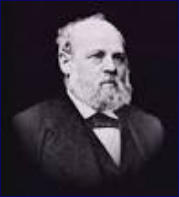
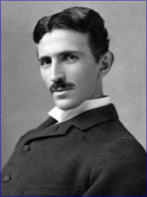
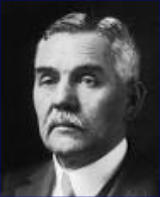
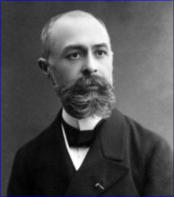
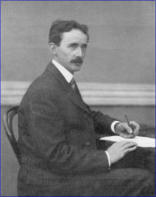

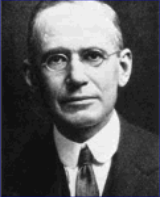
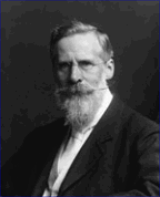
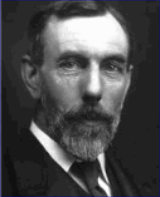
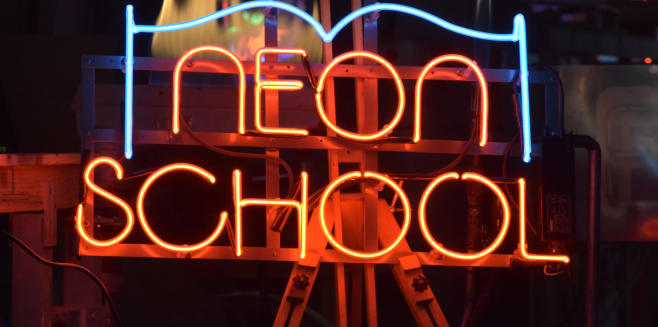
Fathers of Neon
Although history has accredited that George Claude from Paris was the inventor of neon. There are several others
who’s work contributed to the formation of Neon / Cold Cathode tubes. To some their contribution was more important
than that of Georges Claude.
Heinrich Geissler
A Geissler tube is an early gas discharge tube used to demonstrate the principles of electrical
glow discharge. The tube was invented by the German physicist and glassblower Heinrich Geissler
in 1857. It consists of a sealed, partially evacuated glass cylinder of various shapes with a metal
electrode at each end, containing rarefied gasses such as neon, argon, or air;
mercury vapor or other conductive fluids; or ionizable minerals or metals, such as sodium.
When a high voltage is applied between the electrodes, an electrical current flows through the
tube. The current dissociates electrons from the gas molecules, creating ions, and when the
electrons recombine with the ions, the gas emits light by fluorescence. The color of light emitted is characteristic of
the material within the tube, and many different colors and lighting effects can be achieved. The first gas-discharge
lamps, Geissler tubes were novelty items, made in many artistic shapes and colors to demonstrate the new science
of electricity. In the early 20th century, the technology was commercialized and evolved into neon lighting.
source. http://en.wikipedia.org/wiki/Geissler_tube
William Crookes
A Crookes tube (also Crookes–Hittorf tube) is an early experimental electrical discharge
tube, with partial vacuum, invented by English physicist William Crookes and others around
1869-1875, in which cathode rays, streams of electrons, were discovered.
source. https://en.wikipedia.org/wiki/Crookes_tube
Nikola Tesla
Invented how light can be harnessed and distributed. Tesla developed and used fluorescent bulbs
in his lab some 40 years before industry "invented" them. At the World's Fair, Tesla took glass tubes
and bent them into famous scientists' names, in effect creating the first neon signs. However, it is his
Tesla Coil that might be the most impressive, and controversial. The Tesla Coil is certainly something
that big industry would have liked to suppress: the concept that the Earth itself is a magnet that can
generate electricity (electromagnetism) utilizing frequencies as a transmitter. All that is needed on
the other end is the receiver -- much like a radio.
source. http://www.activistpost.com/2012/01/10
-inventions-of-nikola-tesla-that.html#!bifdd9
http://en.wikipedia.org/wiki/Nikola_Tesla
Sir William Ramsay
William Ramsay’s discoveries added an entirely new family of chemical elements to
the periodic table – the noble gases.
He predicted the existence of this family of gases and either discovered or was first
to isolate every member of the group. He created the world’s very first neon light
when he activated an electric switch to investigate one of the new gases.Ramsay
was awarded the 1904 Nobel Prize in Chemistry for his work.
source.
https://pubmed.ncbi.nlm.nih.gov/22574384/
Morris Travers
The discovery of a new chemical element is a rare event; therefore, it is amazing
that, in the space of only forty-two days, Morris Travers was involved in the
discovery of not one but three new elements—krypton, neon, and xenon.
source. http://www.chemistryexplained.com/Te-Va/Travers- Morris.html#ixzz6pvO2YG8C
Daniel McFarlan Moore
Was a U.S. electrical engineer and inventor. He developed a novel light source, the "Moore lamp",
and a business that produced them in the early 1900s. The Moore lamp was the first commercially
viable light-source based on gas discharges instead of incandescence; it was the predecessor to
contemporary neon lighting and fluorescent lighting. In his later career Moore developed a miniature
neon lamp that was extensively used in electronic displays, as well as vacuum tubes that were
used in early television systems.
source.
http://en.wikipedia.org/wiki/Daniel_McFarlan_Moore
Georges Claude
Inspired by Geissler tubes and by Daniel McFarlan Moore's invention of a nitrogen-based light
(the "Moore tube"), Claude developed neon tube lighting to exploit the neon that was produced as
a byproduct of his air liquefaction business. These were all "glow discharge" tubes that generate
light when an electrical current is passed through the rarefied gas within the tube. Claude's first
public demonstration of a large neon light was at the Paris Motor Show Salon de l'Automobile et
du Cycle), 3–18 December 1910. Claude's first patent filing for his technologies in France
Claude himself wrote in 1913 that, in addition to a source of neon gas, there were two principal
inventions that made neon lighting practicable. First were his methods for purifying the neon (or other inert gases
such as argon). Claude developed techniques for purifying the inert gases within a completely \see Moore tubes;
the latter had a device for replenishing the nitrogen or carbon dioxide gases within the tube. The second invention
was ultimately crucial for the development of the Claude lighting business;it was a design for minimizing the
degradation (by "sputtering") of the electrodes that transfer electrical current from the external power supply to the
glowing gases within the sign.
The terms "neon light" and "neon sign" are now often applied to electrical lighting incorporating sealed glass
tubes filled with argon, mercury vapor, or other gases instead of neon. In 1915 a U.S. patent was issued to Claude
covering the design of the electrodes for neon lights; this patent became the strongestbasis for the monopoly held
in the U.S. by his company, Claude Neon Lights, through the early 1930s.
In 1923, Georges Claude and his French company Claude Neon, introduced neon gas signs to the United States,
byselling two to a Packard car dealership in Los Angeles. Earle C. Anthony purchased the two signs reading "Packard"
for $1,250 apiece. Neon lighting quickly became a popular fixture in outdoor advertising. Visible even in daylight,
people would stop and stare at the first neon signs for hours, dubbed "liquid fire."
source, http://en.wikipedia.org/wiki/Georges_Claude
Alexandre-Edmond Becquerel
While Tesla experimented with what he called "phosphorescent" lamps, it was French physicist
Alexandre-Edmond Becquerel who first conceived the idea of placing a fluorescent coating on the
inner surface of a high voltage gas discharge tube. Tesla's investigations in the area of high-voltage
RF power processing techniques did result in the very first high efficiency, high frequency lighting
ballasts. His seminal lectures on the topic of high frequency lighting are, "Experiments With
Alternate Currents of Very High Frequency and Their Application to Methods of Artificial Illumination," "Experiments
with Alternating Currents of High Potential and High Frequency" and "On Light and Other High
Frequency Phenomena" all to be found in the book Inventions, Researches and Writings of Nikola
Tesla. It's interesting to note that the world's first commercial fluorescent amps, introduced by the Westinghouse
Electric Companyat the 1939 New York World's Fair, were of the low-voltage 50-60 Hz hot cathode type still in
common use today. Only since the late 1980s have more efficient high-frequency ballasts some with great
similarities to those developed by Tesla over 100 years ago—begun to gain wider acceptance.
source. http://www.tfcbooks.com/teslafaq/q&a_028.htm









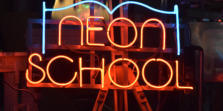
Fathers of Neon
Although history has accredited that George Claude from Paris was the inventor of neon. There are several others
who’s work contributed to the formation of Neon / Cold Cathode tubes. To some their contribution was more important
than that of Georges Claude.
Heinrich Geissler
A Geissler tube is an early gas discharge tube used to demonstrate the principles of electrical
glow discharge. The tube was invented by the German physicist and glassblower Heinrich Geissler
in 1857. It consists of a sealed, partially evacuated glass cylinder of various shapes with a metal
electrode at each end, containing rarefied gasses such as neon, argon, or air;
mercury vapor or other conductive fluids; or ionizable minerals or metals, such as sodium.
When a high voltage is applied between the electrodes, an electrical current flows through the
tube. The current dissociates electrons from the gas molecules, creating ions, and when the
electrons recombine with the ions, the gas emits light by fluorescence. The color of light emitted is characteristic of
the material within the tube, and many different colors and lighting effects can be achieved. The first gas-discharge
lamps, Geissler tubes were novelty items, made in many artistic shapes and colors to demonstrate the new science
of electricity. In the early 20th century, the technology was commercialized and evolved into neon lighting.
source. http://en.wikipedia.org/wiki/Geissler_tube
William Crookes
A Crookes tube (also Crookes–Hittorf tube) is an early experimental electrical discharge
tube, with partial vacuum, invented by English physicist William Crookes and others around
1869-1875, in which cathode rays, streams of electrons, were discovered.
source. https://en.wikipedia.org/wiki/Crookes_tube
Nikola Tesla
Invented how light can be harnessed and distributed. Tesla developed and used fluorescent bulbs
in his lab some 40 years before industry "invented" them. At the World's Fair, Tesla took glass tubes
and bent them into famous scientists' names, in effect creating the first neon signs. However, it is his
Tesla Coil that might be the most impressive, and controversial. The Tesla Coil is certainly something
that big industry would have liked to suppress: the concept that the Earth itself is a magnet that can
generate electricity (electromagnetism) utilizing frequencies as a transmitter. All that is needed on
the other end is the receiver -- much like a radio.
source. http://www.activistpost.com/2012/01/10
-inventions-of-nikola-tesla-that.html#!bifdd9
http://en.wikipedia.org/wiki/Nikola_Tesla
Sir William Ramsay
William Ramsay’s discoveries added an entirely new family of chemical elements to
the periodic table – the noble gases.
He predicted the existence of this family of gases and either discovered or was first
to isolate every member of the group. He created the world’s very first neon light
when he activated an electric switch to investigate one of the new gases.Ramsay
was awarded the 1904 Nobel Prize in Chemistry for his work.
source.
https://pubmed.ncbi.nlm.nih.gov/22574384/
Morris Travers
The discovery of a new chemical element is a rare event; therefore, it is amazing
that, in the space of only forty-two days, Morris Travers was involved in the
discovery of not one but three new elements—krypton, neon, and xenon.
source. http://www.chemistryexplained.com/Te-Va/Travers- Morris.html#ixzz6pvO2YG8C
Daniel McFarlan Moore
Was a U.S. electrical engineer and inventor. He developed a novel light source, the "Moore lamp",
and a business that produced them in the early 1900s. The Moore lamp was the first commercially
viable light-source based on gas discharges instead of incandescence; it was the predecessor to
contemporary neon lighting and fluorescent lighting. In his later career Moore developed a miniature
neon lamp that was extensively used in electronic displays, as well as vacuum tubes that were
used in early television systems.
source.
http://en.wikipedia.org/wiki/Daniel_McFarlan_Moore
Georges Claude
Inspired by Geissler tubes and by Daniel McFarlan Moore's invention of a nitrogen-based light
(the "Moore tube"), Claude developed neon tube lighting to exploit the neon that was produced as
a byproduct of his air liquefaction business. These were all "glow discharge" tubes that generate
light when an electrical current is passed through the rarefied gas within the tube. Claude's first
public demonstration of a large neon light was at the Paris Motor Show Salon de l'Automobile et
du Cycle), 3–18 December 1910. Claude's first patent filing for his technologies in France
Claude himself wrote in 1913 that, in addition to a source of neon gas, there were two principal
inventions that made neon lighting practicable. First were his methods for purifying the neon (or other inert gases
such as argon). Claude developed techniques for purifying the inert gases within a completely \see Moore tubes;
the latter had a device for replenishing the nitrogen or carbon dioxide gases within the tube. The second invention
was ultimately crucial for the development of the Claude lighting business;it was a design for minimizing the
degradation (by "sputtering") of the electrodes that transfer electrical current from the external power supply to the
glowing gases within the sign.
The terms "neon light" and "neon sign" are now often applied to electrical lighting incorporating sealed glass
tubes filled with argon, mercury vapor, or other gases instead of neon. In 1915 a U.S. patent was issued to Claude
covering the design of the electrodes for neon lights; this patent became the strongestbasis for the monopoly held
in the U.S. by his company, Claude Neon Lights, through the early 1930s.
In 1923, Georges Claude and his French company Claude Neon, introduced neon gas signs to the United States,
byselling two to a Packard car dealership in Los Angeles. Earle C. Anthony purchased the two signs reading "Packard"
for $1,250 apiece. Neon lighting quickly became a popular fixture in outdoor advertising. Visible even in daylight,
people would stop and stare at the first neon signs for hours, dubbed "liquid fire."
source, http://en.wikipedia.org/wiki/Georges_Claude
Alexandre-Edmond Becquerel
While Tesla experimented with what he called "phosphorescent" lamps, it was French physicist
Alexandre-Edmond Becquerel who first conceived the idea of placing a fluorescent coating on the
inner surface of a high voltage gas discharge tube. Tesla's investigations in the area of high-voltage
RF power processing techniques did result in the very first high efficiency, high frequency lighting
ballasts. His seminal lectures on the topic of high frequency lighting are, "Experiments With
Alternate Currents of Very High Frequency and Their Application to Methods of Artificial Illumination," "Experiments
with Alternating Currents of High Potential and High Frequency" and "On Light and Other High
Frequency Phenomena" all to be found in the book Inventions, Researches and Writings of Nikola
Tesla. It's interesting to note that the world's first commercial fluorescent amps, introduced by the Westinghouse
Electric Companyat the 1939 New York World's Fair, were of the low-voltage 50-60 Hz hot cathode type still in
common use today. Only since the late 1980s have more efficient high-frequency ballasts some with great
similarities to those developed by Tesla over 100 years ago—begun to gain wider acceptance.
source. http://www.tfcbooks.com/teslafaq/q&a_028.htm









